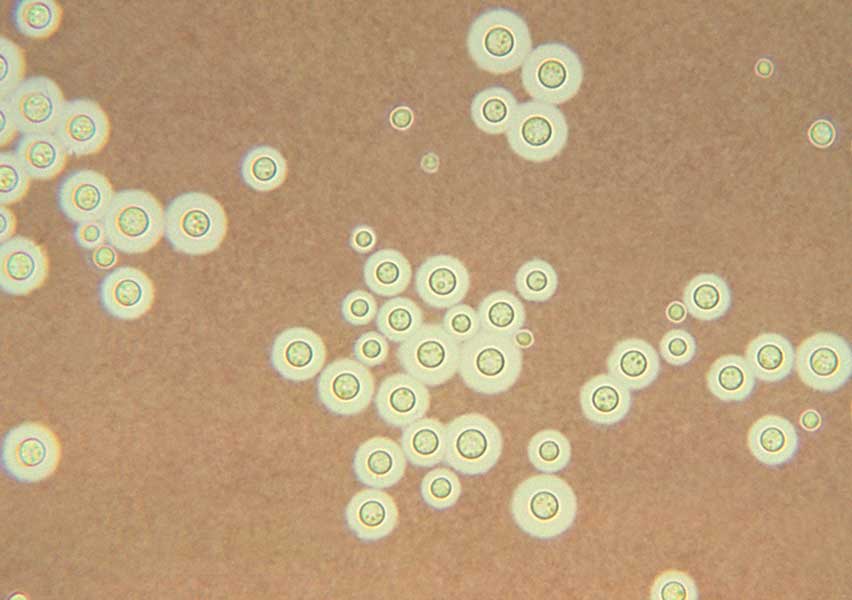Cryptococcus neoformans
Cryptococcus neoformans is a globally distributed encapsulated yeast found especially in soils contaminated with pigeon droppings. Infection occurs through inhalation of airborne fungal spores. Although it can infect immunocompetent individuals, it is much more frequent and severe in immunocompromised patients, particularly those with HIV/AIDS, hematological malignancies, or organ transplants. It is considered one of the leading causes of fungal meningitis worldwide, especially in areas with high HIV prevalence.
Clinical Features
Cryptococcus neoformans is a monomorphic yeast that produces a characteristic polysaccharide capsule visible with India ink staining. Its main clinical manifestation is cryptococcal meningitis, a life-threatening opportunistic CNS infection that predominantly affects immunocompromised individuals.
It may also cause:
- Pulmonary infection: ranging from asymptomatic cases to pneumonia with cough, chest pain, and dyspnea.
- Disseminated infection: affecting skin, bones, prostate, liver, spleen, kidneys, and bone marrow.
- Cutaneous infection: presenting as rashes, ulcers, or nodular lesions.
Neurological symptoms may include fever, headache, neck stiffness, blurred vision, confusion, vomiting, and altered mental status. The onset is often insidious, with gradual worsening if left untreated.
Diagnosis
Diagnosis is based on:
- India ink staining of cerebrospinal fluid (CSF) to visualize the fungal capsule.
- Cryptococcal antigen detection in serum or CSF using latex agglutination or rapid tests.
- Fungal culture of CSF, blood, or other clinical samples.
- Mucicarmine stain of tissue specimens to detect the capsular polysaccharides.
Cryptococcal antigen testing has high sensitivity and specificity and is useful both for diagnosis and for monitoring disease progression.
Risk Factors
Main risk factors for cryptococcosis include:
- HIV/AIDS (especially with CD4 <100/mm³)
- Long-term corticosteroid use
- Organ transplantation
- Chemotherapy
- Sarcoidosis
- Lymphomas, especially Hodgkin lymphoma
It has also been reported in older adults (>50 years), smokers, and patients with chronic pulmonary diseases, though less commonly.

